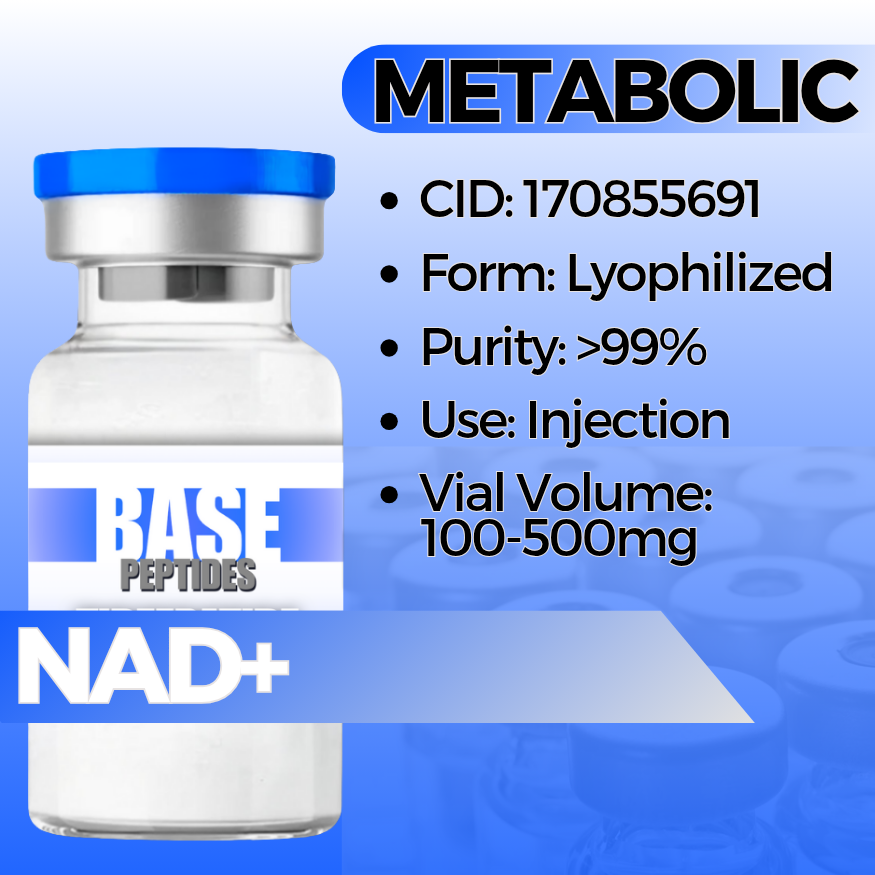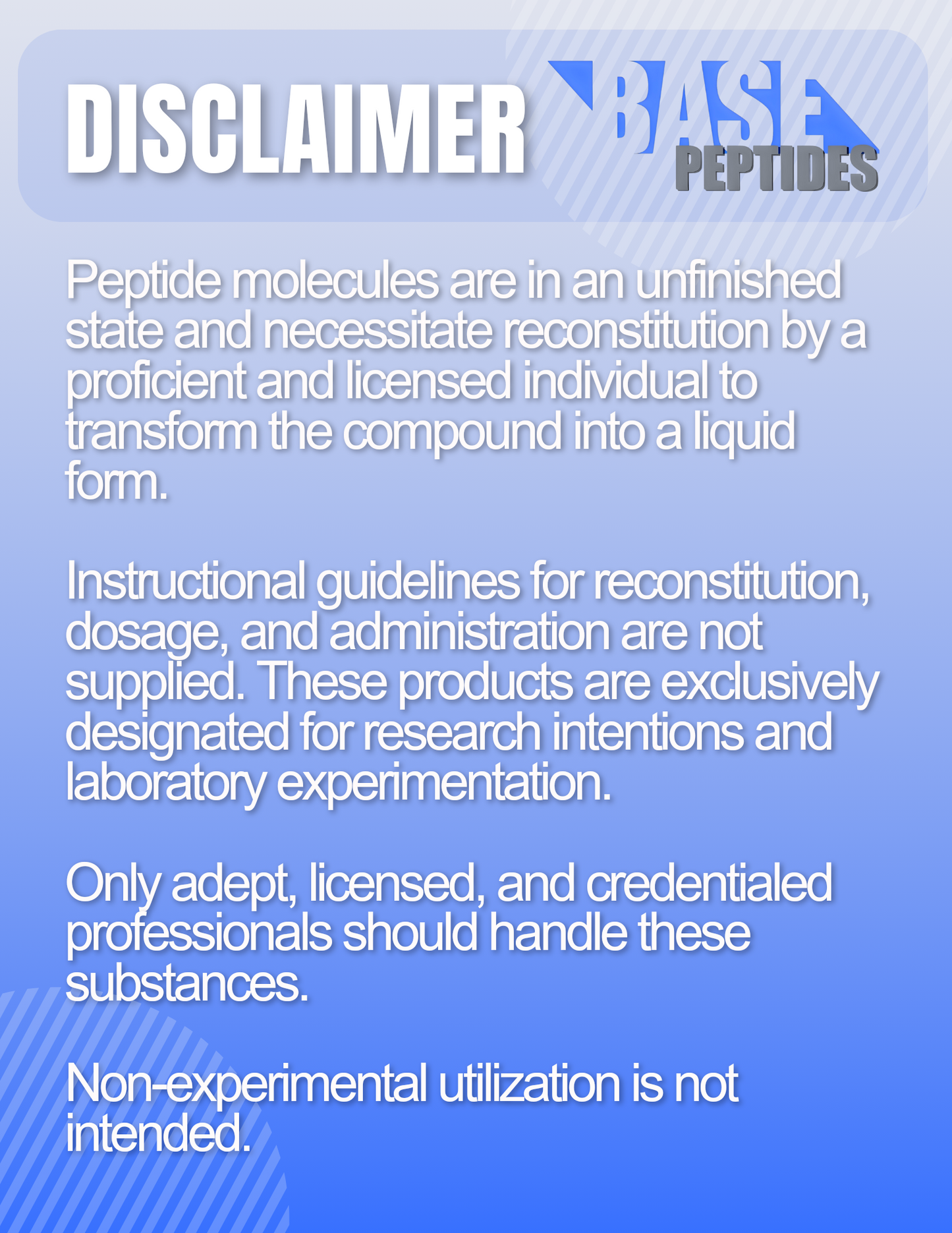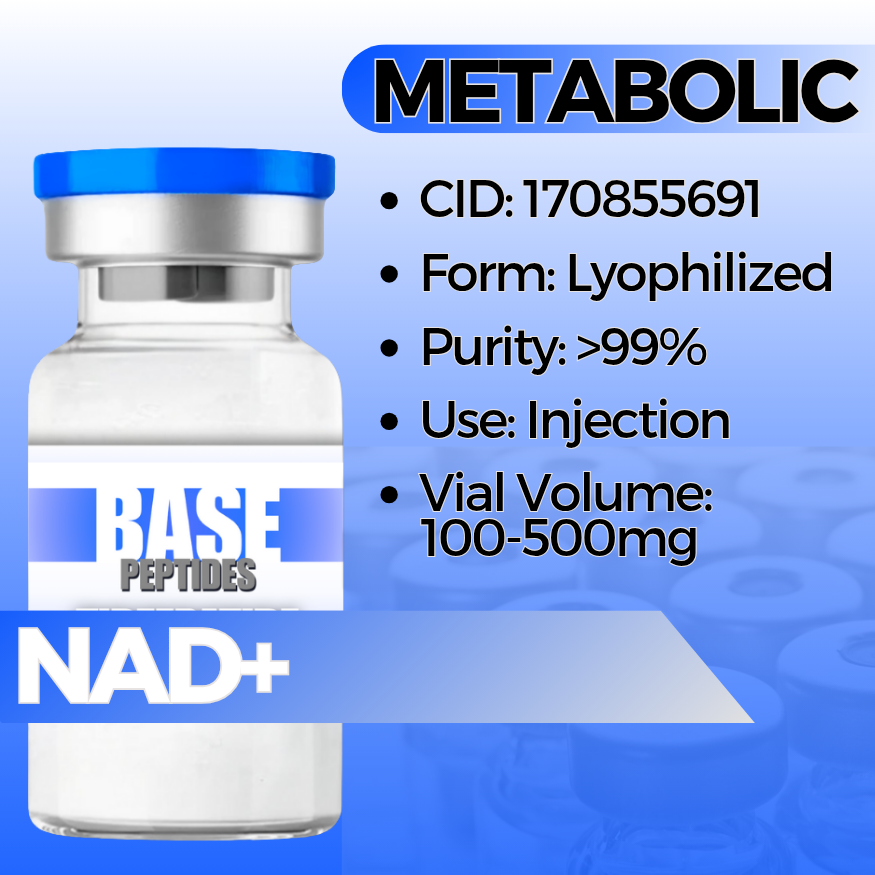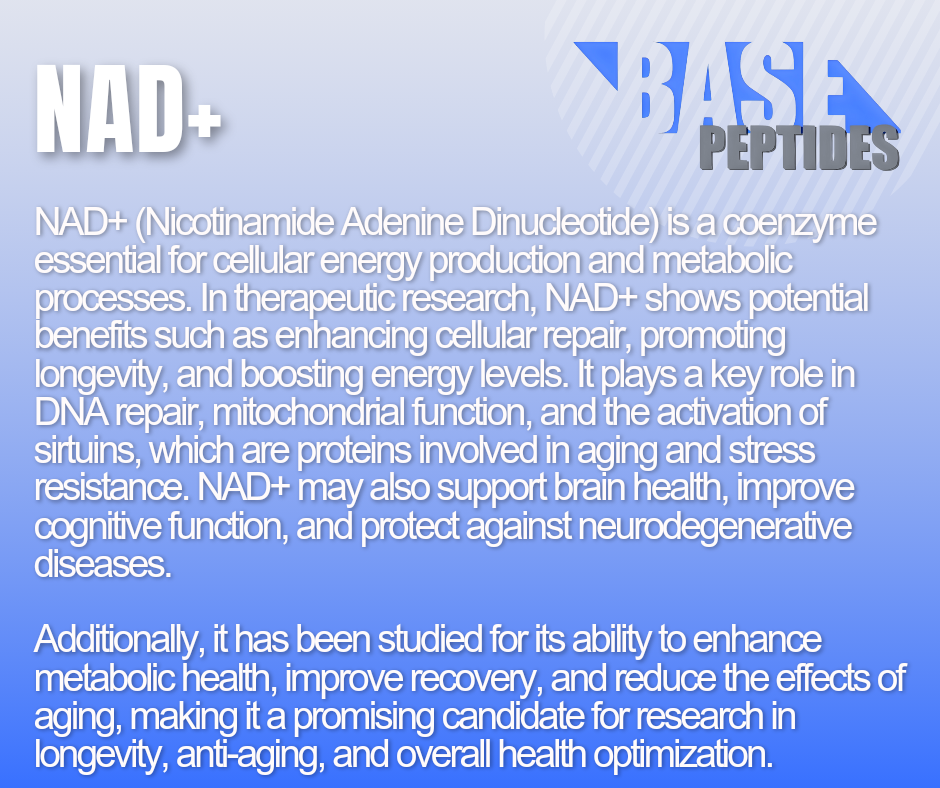NAD+
NAD+
Base Peptides are intended for licensed medical professionals and experienced researchers. Reconstitution required. Dosing and use instructions are not provided.
Couldn't load pickup availability
NAD⁺ — Nicotinamide Adenine Dinucleotide (Oxidized) • Injectable Research Grade
NAD⁺ is a ubiquitous pyridine nucleotide coenzyme central to cellular redox reactions and a substrate for sirtuins, PARPs, and other NAD-consuming enzymes. Injectable research formats are used to probe bioenergetics, mitochondrial function, DNA-repair signaling, and cell stress responses.
- Synonyms: β-NAD; Coenzyme I; DPN⁺
- CAS No.: 53-84-9
- Chemical formula / MW: C21H27N7O14P2 • ~663.43 g·mol⁻¹
- Form: Oxidized nicotinamide adenine dinucleotide (NAD⁺)
- Class: Redox cofactor; enzyme substrate
- Redox shuttle: Cycles between NAD⁺ and NADH to carry electrons in glycolysis, TCA cycle, and oxidative phosphorylation.
- Signaling substrate: Consumed by sirtuins (protein deacetylation), PARPs (DNA-damage signaling), and CD38/CD157 (calcium/immune pathways), impacting transcription, repair, and stress resistance.
- Compartment matters: Cytosolic vs mitochondrial NAD(H) pools can change outcomes; many studies track the NAD⁺/NADH ratio as a metabolic health marker.
- To examine mitochondrial function, ATP production, and oxidative stress resilience.
- To probe DNA repair and inflammatory signaling via PARP/CD38 activity.
- To compare direct NAD⁺ provision vs precursors (NR, NMN, NaR) in pharmacology and kinetics models.
Key Study Themes — What’s Typically Observed
Bioenergetics & Mitochondrial Readouts
- Endpoints: NAD⁺/NADH ratio, oxygen consumption rate (OCR), ATP levels, ROS, membrane potential.
- Typical findings: Designs that raise cellular NAD⁺ often report improved redox balance and stress tolerance (model-dependent).
- Notes: Effects vary by tissue, delivery route, and timing; confirm compartmental targeting.
DNA Damage / Repair & Inflammation
- Endpoints: PARylation, γH2AX, sirtuin targets (e.g., PGC-1α deacetylation), cytokine panels.
- Typical findings: Modulation of PARP/sirtuin pathways with downstream effects on repair and inflammatory tone in select models.
- Design tip: Account for PARP activation draining NAD⁺ pools during acute DNA damage.
Potential Research Applications
Metabolism & Aging Biology
- Redox balance, sirtuin activity, mitochondrial biogenesis markers.
Neuro & Cardio Stress Models
- Ischemia/reperfusion, excitotoxicity, neuroinflammation panels.
Immunometabolism
- CD38-linked NADase activity, macrophage polarization, cytokine output.
Synergistic / Comparator Compounds
NMN / NR (Precursors)
- Why compare: Indirect vs direct NAD⁺ elevation; differing transport and conversion steps.
MOTS-c / SS-31
- Why pair: Layer mitochondrial-support peptides with NAD⁺-dependent sirtuin biology.
Resveratrol / Urolithin A
- Why compare: Sirtuin/mitophagy pathways that intersect with NAD⁺ availability.
What’s in the Vial (Editable)
| Active | Per Vial | Grade / Purity |
|---|---|---|
| NAD⁺ (β-Nicotinamide Adenine Dinucleotide) | 250 mg (set your SKU) | Research-grade, ≥ 98–99% (HPLC/MS) |
| Appearance | White to off-white solid; hygroscopic | |
| Solubility | Water-soluble; prepare fresh sterile solution for lab use | |
Specifications & Handling
- Form: Lyophilized powder for injectable research workflows (lot-coded)
- Storage: ≤ −20 °C (dry, dark); minimize humidity and light exposure
- Stability: Aqueous NAD⁺ is labile—use immediately after sterile preparation; avoid repeated freeze–thaw
- Labeling: “Research Use Only”; CAS/lot/SKU, concentration after reconstitution, and expiration clearly displayed
- QC (per lot): HPLC identity/purity, endotoxin/bioburden (if sterile-filtered vial), residual solvents, pH/osmolality (solution)
Known Concerns (Context)
- Chemical sensitivity: Degrades with heat, light, and alkalinity; track pH and protect from UV.
- Pathway crosstalk: High PARP activation can deplete NAD⁺; CD38 upregulation alters pools—design controls accordingly.
- General: For laboratory research use only; not for human consumption or therapeutic/veterinary use.
Regulatory & Use Notice
Sold for laboratory research use only. Not for human consumption, medical, or veterinary use. No human-use instructions are provided. Buyer is responsible for safe handling and regulatory compliance.
NAD⁺ Injection Research | Nicotinamide Adenine Dinucleotide (Oxidized) | Mitochondrial Bioenergetics, Sirtuins & DNA-Repair Studies






